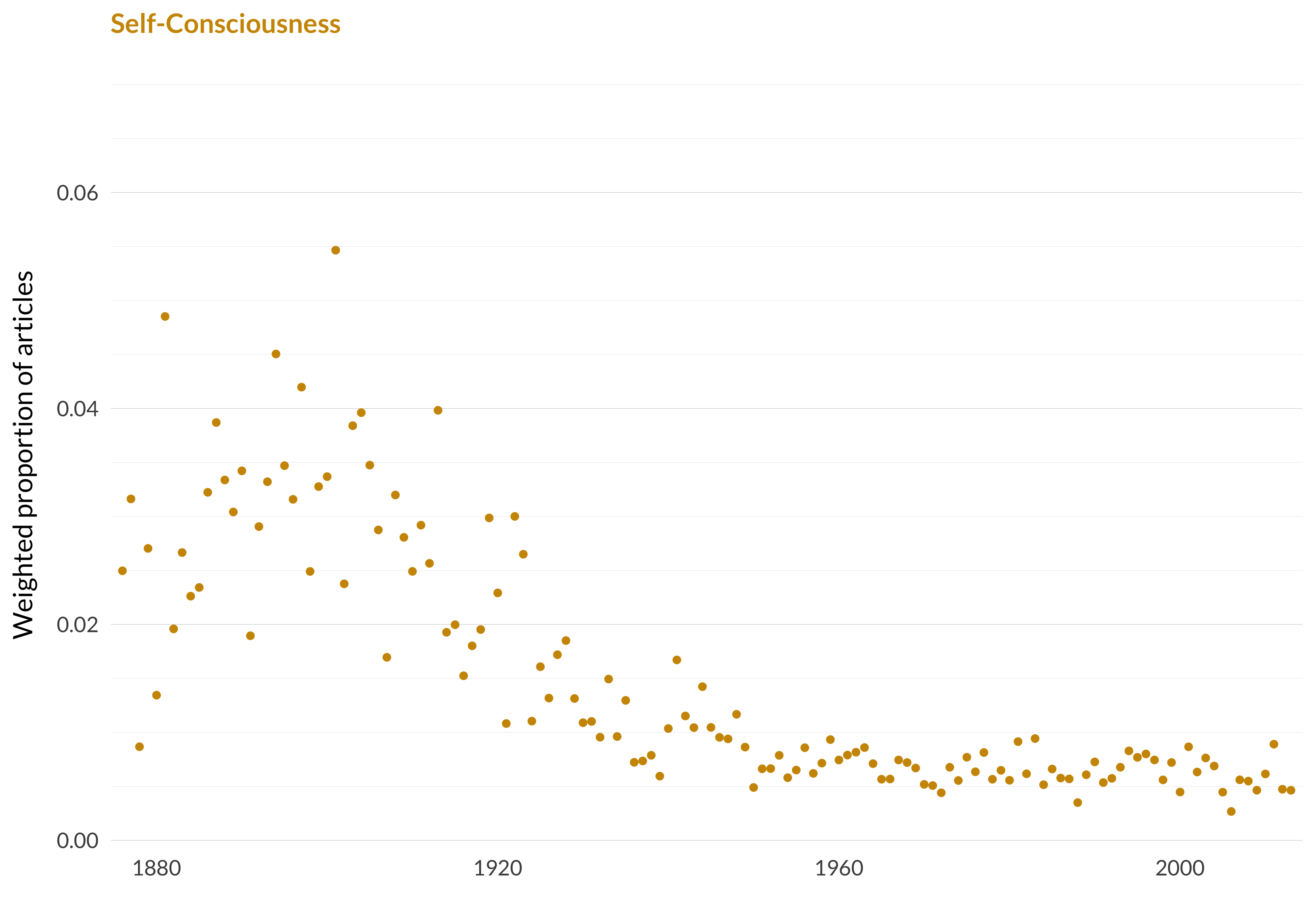2.12 Self-Consciousness
Category: Philosophy of Mind
Keywords: conscious, selves, self, consciousness, inner, ego, unconscious, stream, awareness, reflexive, oneself, outer, aware, ness, reflective
Number of Articles: 111
Percentage of Total: 0.3%
Rank: 88th
Weighted Number of Articles: 288.9
Percentage of Total: 0.9%
Rank: 51st
Mean Publication Year: 1957.6
Weighted Mean Publication Year: 1953
Median Publication Year: 1967
Modal Publication Year: 1922
Topic with Most Overlap: Idealism (0.05)
Topic this Overlaps Most With: Minds and Machines (0.0319)
Topic with Least Overlap: Radical Translation (0.00017)
Topic this Overlaps Least With: Models (0.00035)

Figure 2.35: Self-consciousness.

Figure 2.36: Self-consciousness articles in each journal.
Comments
This is a strange topic. It peaks in the early part of the timeline, and a lot of the articles in it feel very continuous with the other early topics. But unlike idealism and the topics connected to pragmatism, it keeps picking up articles to the present day. I think this is something of a coincidence; the fact that there is more lexical overlap between philosophy of mind circa 1912 and philosophy of mind circa 2012 than there is in, say, ethics or metaphysics across the one hundred years doesn’t show that there is much overlap in content.
The top characteristic article here, G. W. Cunningham’s “Self-Consciousness and Consciousness of Self” (1911) is useful for thinking about what goes into this topic. On the one hand, the example Cunningham starts with, of a young boy doing public speaking for the first time, is the kind of thing found in more contemporary work. And the distinction Cunningham draws, between the way the boy feels about himself in contrast to the wider world and the sum total of the boy’s stream of consciousness, also feels contemporary enough. On the other hand, Cunningham explicitly rejects the equation of these contrastive feelings (such as embarrassment at being the center of attention) with self-consciousness. That’s consciousness of self for him. And within a few pages we’re in a discussion of whether the Absolute (capitals very much in original) could have a consciousness of self if there is no Other to contrast with. And this feels like it could just be an idealism paper.
Still, it’s a bit helpful that the model teased out these philosophy of mind papers from the general run of idealism papers. It end up revealing a bit more about what’s going on in these early days.